A visual collection + written survey on Afrofuturism + Afrofuturist Feminists.
Don't wanna be here? Send us removal request.
Photo
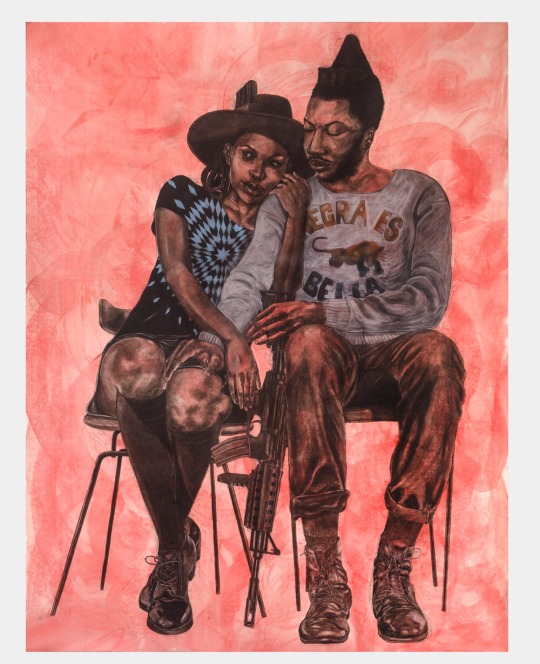
garveyette celestials, 2015 © robert pruitt
35 notes
·
View notes
Photo
when your afrofuturism is so retrofuturistic…nasa is still looking.
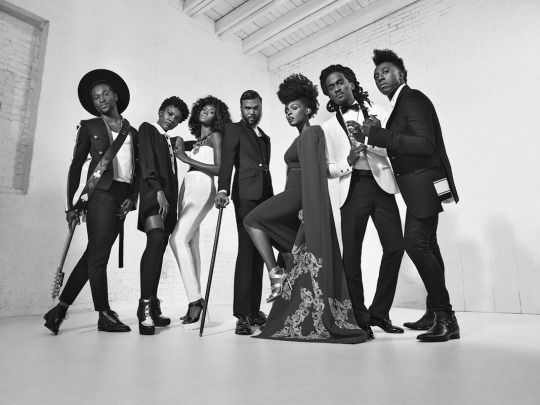
3K notes
·
View notes
Photo
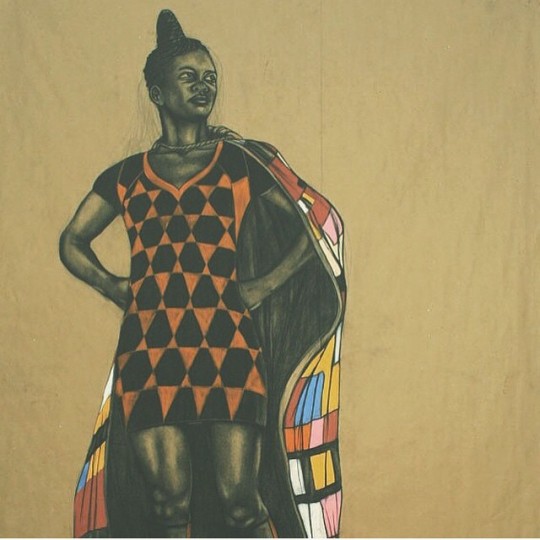
Robert Pruitt, a contemporary griot, creates narratives via drawings, sculpture, and photography that the Signifying Monkey would be proud of. Layered in Black aesthetics and identity, Pruitt’s life-size figures become tricksters who tell tales through contrasting signs, poses, and dress. These Heroes and Heroines are everyday people, like us, who are masked in references to Science Fiction, Hip Hop, comic books, and Black political and social struggles… go + read more : http://saintheron.com/art/interview-robert-pruitt/
#afrofuturism#afrofuturistic#robert pruitt#saint heron#art#culture#blackcontemporaryart#blackart#cape#natural hair#blackfashion
74 notes
·
View notes
Photo
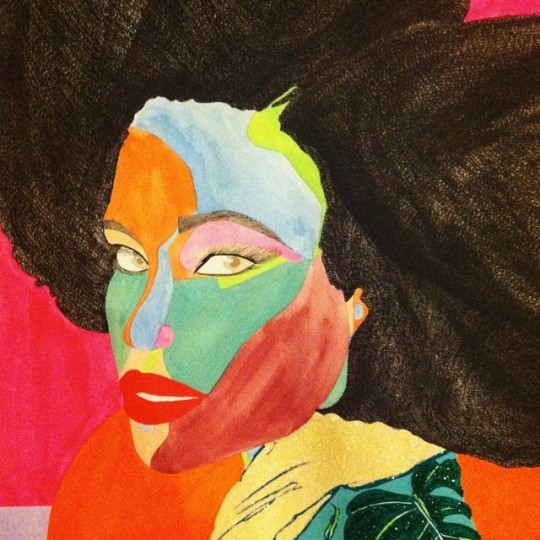
"clouds + cosmos: cumulus calvus [close-up]" © MMXIV
#afrofuturism#aisforafrofuturism#blackhair#cloudsandcosmos#pastel#neon#naturalhair#tanekeyaword#portraiture#beauty#hybridchic#blackwomen#art#contemporaryart#blackcontemporaryart#worksonpaper
45 notes
·
View notes
Photo
the toronto based, sri-lankan born artist, rajni perera observes afrofuturism, blaxploitation, etc in her newest series afrika galaktika.
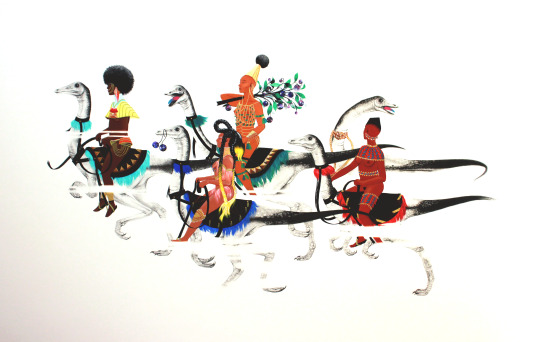
HERD commissioned piece | 24” X 36” mixed media on paper
105 notes
·
View notes
Photo
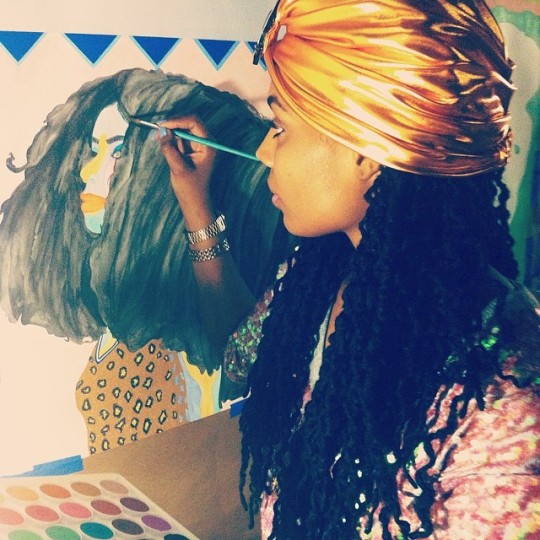
quickly becoming one of my favorite photos, because my mommy photographed me painting. i always wondered what my mommy saw when she stared at me painting. as an artist herself, she chose to pursue healthcare to make a “better” life for her daughters instead of living her dreams. my mother told me because she made that sacrifice, i am now here living her dreams + mine in the arts. my soul rejoiced over a mother’s love, dedication + sacrifice. this photo will forever remind me of our moment: artist to artist + mother to daughter. ❤️ turban by: @themcbproject
260 notes
·
View notes
Link
Black to the Future
Article by Alley Pezanoski…, Illustrated by Pam Wishbow, appeared in issue Maps & Legends; published in 2014; filed under Music.
How women in pop are carrying the mantle of Afrofuturism
Maps & Legends
illustration by Pam Wishbow
When my brother and I were young, our parents would build us igloo forts out of blue sheets in the living room before putting us to bed. They would turn off all the lights except for a string of white Christmas lights that looped through our plants, and turn on the jazz-fusion, African-rhythm synthpop of Afro-Parisian Wally Badarou, creating an icy new world for us. What I now recognize as a way to calm two small children before bedtime felt like magic to me then. Our living room was transformed into a timeless space that felt simultaneously prehistoric and futuristic.Grace Jones’s “Slave to the Rhythm” was in heavy rotation in our household. I remember poring over the cover art—her fierce eyes; her avant-garde high-top fade; her open, extended mouth like a chomping cyborg or an insect mandible; and her glossy brown skin. All this, paired with her booming and distorted voice over African percussion and synth, made her a mesmerizing figure to my 7-year-old ears and eyes. I had never heard music or a voice like hers, and although I didn’t completely understand her or the world she was creating with her music, she would go on to influence my ideas of womanhood, blackness, and the performative nature of identity.
In a way, these were my first introductions to Afrofuturist music. While the term “Afrofuturism” originated with cultural critic Mark Dery in 1993, the idea behind it has existed for far longer, and the genre has expanded into all mediums as both an aesthetic and an expression of critical race theory. Afrofuturism is a way to project blackness into the future—not merely as existing, but as a critical and significant part of it. In music, Afrofuturists play jazz, funk, soul, electro, rock, dub reggae, and hip hop—or more often than not, a blurred and blended form of all of the above, with artists from Miles Davis to Earth, Wind & Fire to Erykah Badu engaging with the aesthetic.
In terms of the movement’s ongoing legacy, Alondra Nelson, creator of the eminent Afrofuturism.net listserv, believes there are still “voices with other stories to tell about culture, technology, and things to come,” which “can both deepen and complicate how we think about Afrofuturism.” In the catalog essay for a recent Afrofuturist art show she curated at the Studio Museum in Harlem, she wrote that “in the zeal for a liberatory detour, Afrofuturism [has come] to be more likely embodied by Sun Ra, George Clinton, Jean-Michel Basquiat, Ralph Ellison, and ‘The Brother from Another Planet’” than by women like LaBelle, Ellen Gallagher, Laila Ali, Jewelle Gomez, and Nyota Uhura. She adds that “queerness (in the broadest sense) of past-future visionaries such as Samuel R. Delany, Octavia E. Butler, and Nalo Hopkinson too often goes unappreciated as a central feature of black futurist aesthetics.”
But this is beginning to change with the emergence of artists like Janelle Monáe, THEESatisfaction, Ebony Bones, Solange, Kelela, Moko, and other musicians who are overt about the influence that Afrofuturism has on their work. While ’90s and early-2000s artists like Missy Elliott, TLC, and Janet Jackson explored its aesthetic, there is no denying that Afrofuturism is permeating culture in a more deliberate way today. Now, musicians (many of whom happen to be roughly the same age as I am) honor, experiment with, and often subvert the sounds, tropes, and images of the Afrofuturism we grew up with. As a result of the wider acknowledgment of Afro-futurist art, more voices have emerged in pop culture to expand notions of blackness into the future as well as to transform ideas of blackness today.
One of the most important elements of Afrofuturism is the way that the past, present, and future are in constant dialogue with one another. In the music video for “Q.U.E.E.N.,” Janelle Monáe and Erykah Badu, frozen specimens in the “Living Museum” of the future, are liberated by funk when two revolutionaries start the track. (As George Clinton said: “Free your mind and your ass will follow.”) Combining references to the past—including a nod to Philip K. Dick—and imagery from the future, the message of the song is one of subverting prejudiced expectations in the present:
I’mma keep leading like a young Harriet Tubman/ You can take my wings but I’m still goin’ fly/ And even when you edit me the booty don’t lie/ Yeah keep singing, I’mma keep writing songs/ I’m tired of Marvin asking me, “What’s Going On?”/ March to the streets ’cause I’m willing and I’m able/ Categorize me, I defy every label/ And while you’re selling dope, we’re gonna keep selling hope/ We risin’ up now, you gotta deal you gotta cope/ Will you be electric sheep? Electric ladies, will you sleep?/ Or will you preach?
Visions of the future are largely concerned with science and technology, and Afrofuturism acknowledges the rocky relationship African Americans have historically had with these fields: In science’s shady past, the African-American body was treated violently, with black female bodies treated as especially alien or other. In Afrofuturism, adopting an alien, cyborg, or robot alter ego is one way to reclaim this previously negative relationship with science and technology. It is no surprise, then, that themes of body, image, and alter ego factor into the work of women Afrofuturist musicians so strongly. Whether through makeup, hair styles, costuming, or special effects, the cyborg or robot alter ego can act as armor to protect against the pop-music industry’s limiting expectations.
“It’s a way to step outside the race box and escape expectations about what kind of music a black person should create if they want to be successful,” says Ytasha L. Womack, author of 2013’s Afrofuturism: The World of Black Sci-Fi and Fantasy Culture (read our interview with Womack here). “Creating an alter ego empowers an artist to go beyond social conventions. It’s a way of redefining yourself before the world. When an artist creates a new origin, a new story and declares that they are from space, that artist is compelled to create new, boundary-crossing music.” Missy Elliott’s ballooning black vinyl suit cements her as the queen bee of her surrealist world in the music video for “The Rain (Supa Dupa Fly).” Nicki Minaj reclaims her weirdness as the pink Day-Glo “robo diva.” These personae signal that the artist will not be hemmed into preconceived notions of what they can be—either as an artist or a black woman.
Alter egos also offer ways to make politicized statements through personal expression. Monáe has created the cyborg identity Cindi Mayweather, who, whether clad in white, vinyl robo-gear or transformed into a pompadoured, gender-bending incarnation, fights for freedom of expression against oppressive powers. In Monáe’s video for “Tightrope” (which contains visual nods to Sun Ra’s 1974 film Space Is the Place), Cindi Mayweather breaks out of an institution where music and dancing have been banned. It is significant that this Emma Goldmanesque dance revolution is led by the black and brown residents of the institution, played by Monáe and her band of collaborators. Some critics, like Jody Rosen at New York magazine, have complained about a disconnect between Monáe’s image and her music, but it’s clear that she is simply doing something new that doesn’t quite fit with the stereotype with which critics are attempting to pigeonhole her.
In his September 2013 Flavorwire article, “Let Janelle Monáe Be Janelle Monáe,” Tom Hawkings worries that “Afrofuturism” is too limiting a term for artists like Monáe. But artists who identify as Afrofuturists know that it doesn’t nullify all other identities. In fact, the cyborg, alien, or robot identity is integrated into the multifaceted black and female identity, and can be dropped at any time.
London’s Ebony Bones doesn’t take on any alien persona or robot identity, but rather pairs her otherworldly look with sci-fi references, political messages, and genre-jumping, danceable music. Part I of her album Behold, A Pale Horse, titled “Born in Flames,” is a reference to Lizzie Borden’s 1983 feminist sci-fi film of the same name that depicts an alternate universe in which the United States is a socialist democracy. The film looks at racism, sexism, classism, and heteronormativity. Additionally, Bones’s “Born in Flames” is also about the riots and economic turmoil she experienced growing up in London’s Afro-Caribbean community during the Thatcher administration.
Today’s women Afrofuturist musicians are more overtly aligning Afrofuturism and feminism. Writer and artist Tanekeya Word says that while Afrofuturist feminism is similar to “cyberfeminism” (in which the cyborg is the ultimate evolution), it is ultimately “rooted in ethnicity and gender.” Afrofuturist feminism and cyberfeminism both exist within a radical feminist context, one in which, historically, Word says, “unity amongst women left no room in their structure for race, othering the black body within feminism for decades.” But in contrast to Donna Haraway’s 1991 “A Cyborg Manifesto,” where cyborgs are genderless and operate outside of race, procreation, or family structures in a technology- and progress-obsessed future, Afrofuturist feminists “do not need to eradicate the black or female body nor the history it has witnessed.”
Word goes on to note that although “Afrofuturist feminists [may] shape-shift, hybridization, including robotics, may occur—it’s not a permanent state that negates the black female body” entirely. So, Seattle duo THEESatisfaction can explore Afrofuturism through the song “Earthseed,” based on the sci-fi series of the same name by Octavia E. Butler, in which she details a fictional religion based on the concept “God is Change”—and then on the same album, produce a jam like “QueenS,” which is all about getting down in the here and now. In the music video, you’ll see the most fashionable house party you can imagine—all bright colors and prints, dangly earrings, ’fros and braids—and a celebration of queer female friendship.
Yet artist Martine Syms reminds us not to get too far-out with ideas of the future when there is still so much change that desperately needs to happen now. In December 2013, Syms published “The Mundane Afrofuturist Manifesto” online at Rhizome. It was inspired by a manifesto from the 2004 Clarion West Writers’ Workshop in which sci-fi and fantasy writers called for a new science fiction rooted in the future of humanity on Earth, rather than on spaceships or alien worlds. In the manifesto, Syms states “While we are often Othered, we are not aliens. Though our ancestors were mutilated, we are not mutants.” She calls for the production of Mundane Afrofuturist literature that contains no interstellar travel (too time-consuming and expensive); no “inexplicable end to racism;” no aliens, alternate universes, or revisionist history; and no tropes of mammies, jezebels, or sapphires. Syms wants artists to create Afrofuturist work that doesn’t skip over or sanitize the messy, brutal, complicated nature of structural racism and sexism with unlikely scientism.
In early 2014, Syms will release a Mundane Afrofuturist album called Most Days, which will feature a table read of a screenplay written by Syms about “what an average day looks like for a young black woman in 2050 Los Angeles” as well as a score composed with artist Neal Reinalda. While the parameters of Mundane Afrofuturism are no doubt too restrictive for many musicians and artists, it is the differences in approach and the continued evolution of the genre into deeper, more nuanced territory that is part of the power of Afrofuturism.
When I was a child, Afrofuturist music and musicians helped me project a vision of myself, my weirdness, and my hybrid identity as a biracial woman into blackness and into the future. Now that I am an adult, Afrofuturist musicians make me hopeful for the future, because they are pushing and working for change.
Alley Pezanoski-Browne is a documentary producer, music writer, and a master’s candidate in critical theory and creative research at the Pacific Northwest College of Art. She would like to thank Ytasha L. Womack, Tanekeya Word, Alondra Nelson, Michael A. Gonzalez, Jakeya Caruthers, Paul D. Miller, Julian Gill-Peterson, Amir George, Tony Browne, Iris Williamson, and Nick Barbery for their assistance with this piece.
Editor’s Note: It came to my attention after production that “Black to the Future,” the title our editorial team thought up for Alley’s article, is the very same title as Mark Dery’s 1993 seminal Afrofuturism article, referenced in this piece. I regret not noticing this earlier. —Kjerstin Johnson, editor in chief.
#afrofuturism#cyborg#janelle monae#feminism#afrofuturist#afrofuturistfeminist#aisforafrofuturism#bitchmedia#gracejones#wallybadarou#markdery#milesdavis#earthwindandfire#erykahbadu#alondranelson#studiomuseum#sunra#georgeclinton#Jean-Michel Basquiat#ralphellison#thebrotherfromanotherplanet#labelle#ellengallagher#lailaali#jewellegomez#nyotauhura#queerness#samuelrdelany#octaviaebutler#nalohopkinson
58 notes
·
View notes
Photo
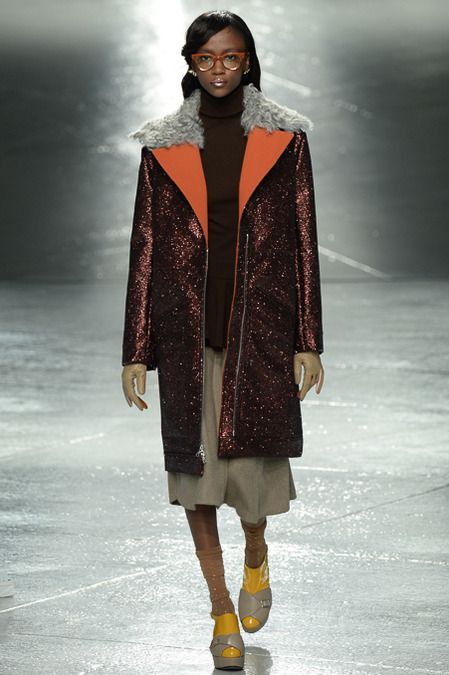
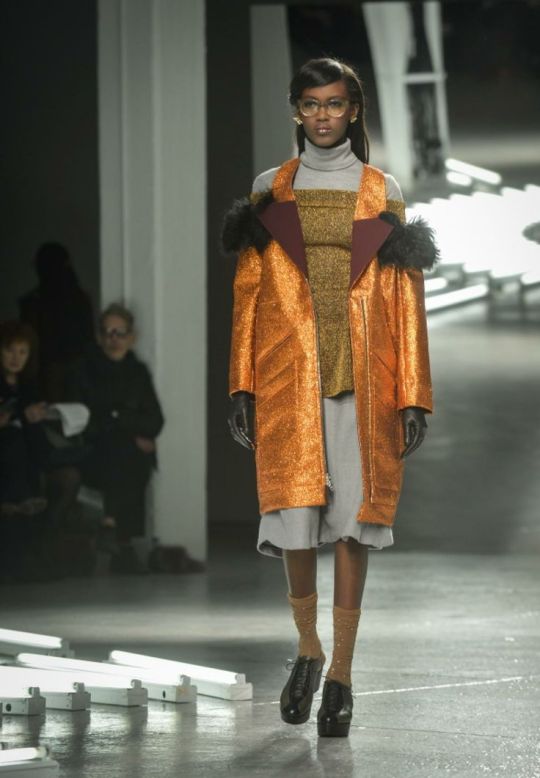
Destination: Fall 2014 Rodarte
38 notes
·
View notes
Photo
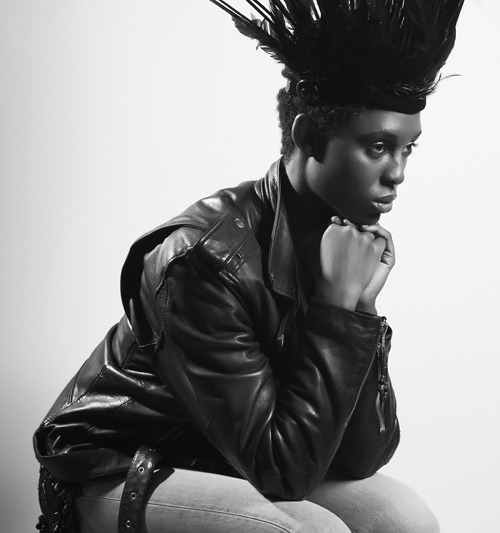
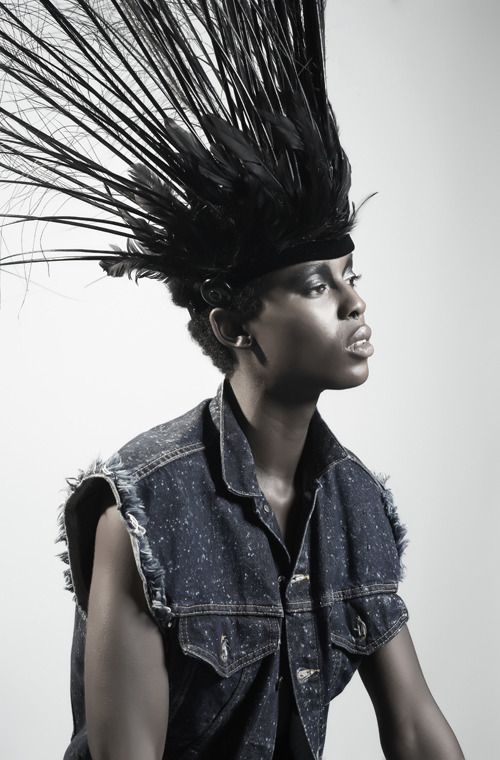

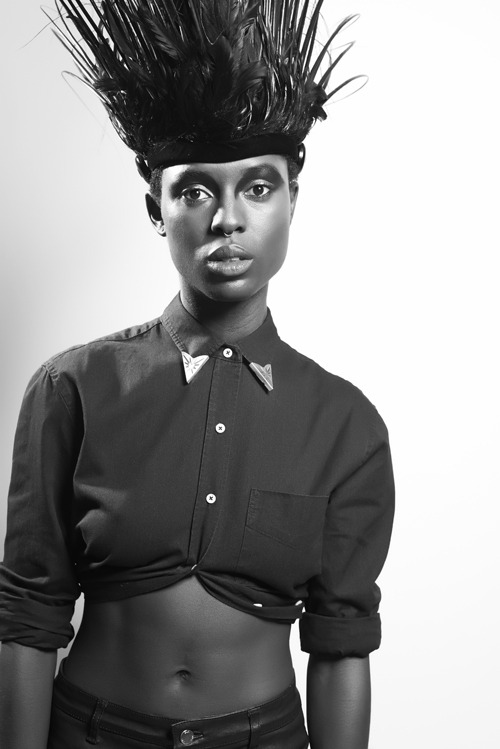
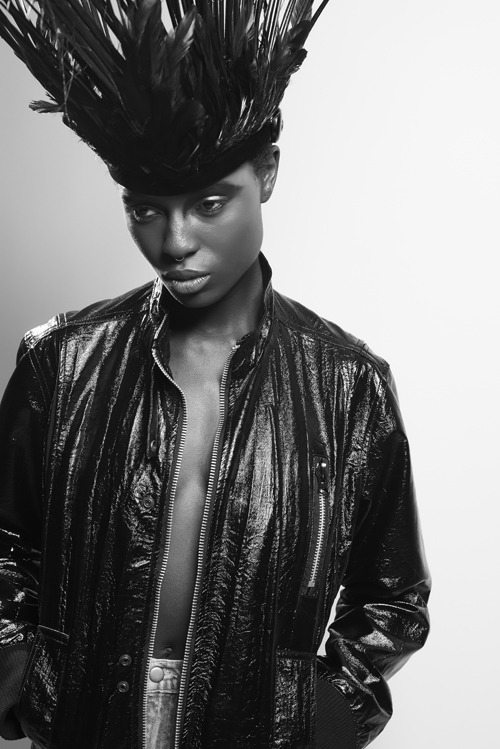
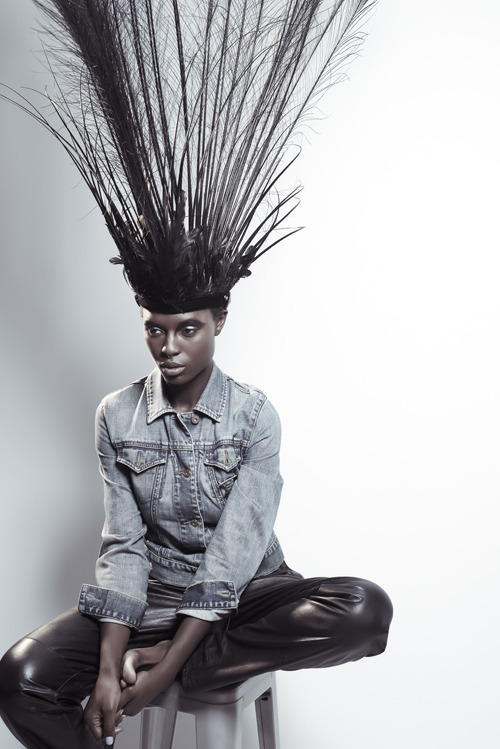
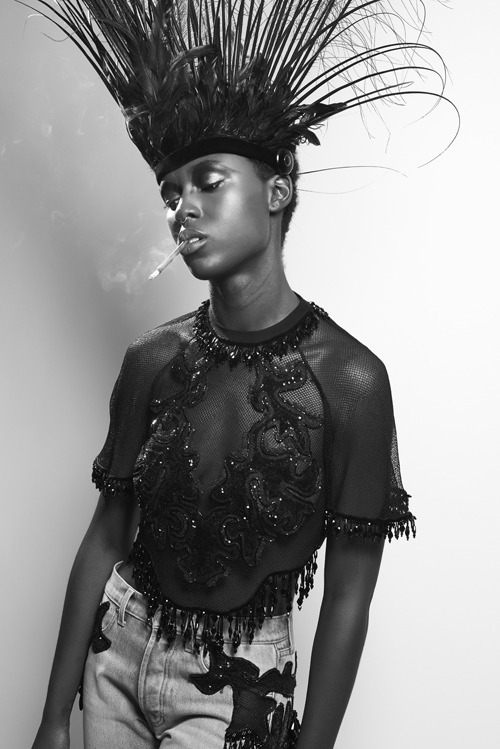
Jodie Smith.

Photos by Derek Matarangas for LURVE magazine.
Model: Jodie Smith, Stylist: Timothy Chernyaev, Make-up Artist: Jazzmene Ellison.
Jodie wears Louis Vuitton headdress top and jeans, worn throughout, BLK DNM leather jacket, Guess jeans, Levi´s denim vest. Calvin Klein chambray shirt, Western Spirit collar tips, Dsquared2 leather pants and Dior Homme by Heidi Slimane Archive jacket. Polo Ralph Lauren denim jacket & Acne leather trouser.
847 notes
·
View notes
Photo

blush.
paris, 1969
herman leonard
#grace#gracejones#blush#fashion#photography#hermanleonard#aisforafrofuturism#afrofuturism#afrofuturistic#afrofuturistfeminist
46 notes
·
View notes
Photo
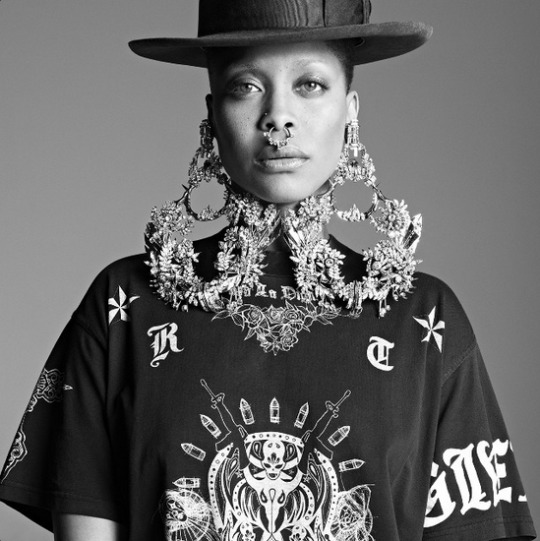
giving givenchy life.
#aisforafrofuturism#afrofuturistic#fashion#givenchy#tisci#erykahbadu#badu#afrofuturism#afrofuturistfeminist#photography
163 notes
·
View notes
Photo
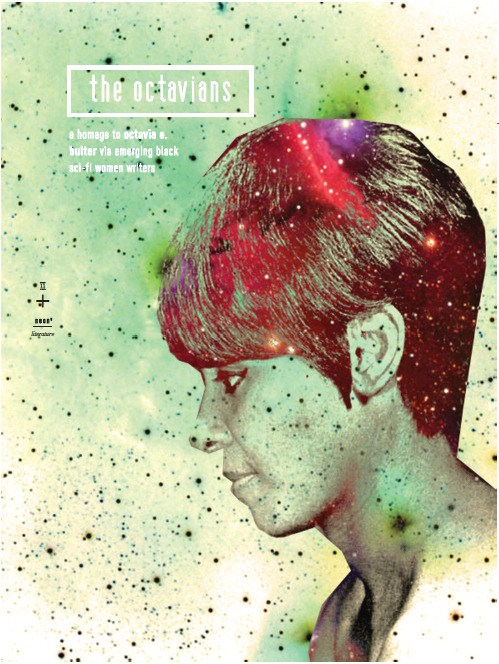
“infinite dreams”
if i were strong enough, i wouldn’t need to drink it. every other day, i take a book to the soothie bar around the corner from my apartment and sit at a table away from the window, listening to the drone of the blender as it grinds frozen melons and mangoes into a sedate puree. i scan the pages, my ears perking up whenever someone leans in to place an order. will they go through with it? the orders never deviate. “medium mango moodslayer, please.” “large melon self-love to go. no ice.” then the blenders start up again, whirring blades of sameness, and i return to my novel or bible or whatever book i happened to pick up on my way out of the apartment. i never finish my drink. as i leave the shop, it takes a minute for my eyes to focus, and i reach for the red banister outside the door to steady myself. i toss my cup into a dumpster in the alleyway. bums descend on it. i quicken my pace, rushing away from the sound of anxious sucking. there is a soothie bar on every corner in north hollywood. nine years ago, when i first moved to this wasteland for would-be actors and writers, people were less inclined to drink pureed fruit in a cup, especially at twelve dollars a shot. since the dereg of ‘22, my neighbors are more than willing to pay fifty-five dollars for their daily soothie. it’s sweeter this way, filling and there is no aftertaste.
if i were strong enough, i wouldn’t need to drink it. women like me are only as strong as the things we fear. as far as i know, i’m the only one of my girlfriends who finds solace in a straw clogged with blended fruit. soothies, hold the blues at bay and rejection and dusty dreams. my friends turn up their noses at such a crutch. when they’re in pain, they go to church. they sing psalms. they talk to god. i wish i could join in their pious conversations; but, my mouth is dry—all the time. if my great-grandmother were still alive, she’d scoff at the sight of me lying in my darkened bedroom, studying stucco for hours. when she was my age, she was down in alabama protecting her property from klansmen with a winchester rifle. “ole bessie,” she used to say, cradling an imaginary gun in her gnarled hands, “she ain’t stopped smoking yet.” it’s embarrassing to be so weak.
a month ago, on my way out of a soothie bar in studio city, i saw my friend monifa walking down ventura on her way to salsa class. i tried to back into the shop, but she started toward me, pushing her way through the crowd of bums. “haven’t seen you in a minute, phyllis. how’s the writing going?” “fifty pages into a new script,” i said. i hadn’t written anything new in a while. at twenty-six, i already felt that my best work was behind me, but she didn’t need to know that. “we missed you at bible study.” “work has been crazy. never can seem to get out from under a mound of memos.” she frowned at the cup in my hand. “inspiration?” “this is my last one, monifa.” “you’re better than this. i’ll pray for you.” if prayer worked, there would be no need to sip soothies. my habit is a fruit-filled gulf separating me from god. i have never felt that love, have never known true communion.
today, i’ve decided that i will no longer live in the shadows of my life. this is my last soothie. i say that every week, but today, i mean it. i made the decision as i showered. water always brings clarity. for once, my hands are steady as i get dressed. i whistle, selecting a black crepe dress with an empire waist. i collect my braids into a wiry bun at my nape, securing the hairdo with a red clip. a faux leather purse and black flats complete the look, and i leave the apartment. moving down the front steps of my building, i head in the direction of the shop. no idling motor or belching exhaust pipe slices the silence. most folks in my neighborhood choose to walk rather than waste their soothie money on gas. the only sounds are my flats squeaking on the pavement and a fat kid maneuvering his treadmill scooter down the sidewalk. it’s a cumbersome contraption, and the boy sweats as he jogs on the humming black strip atop his scooter. childhood obesity is a pandemic now, and federal law mandates that overweight kids exercise even as they play.
i pass a row of grimy pink buildings that seem to be slouching into the earth instead of rising from it. i never noticed how dirty this neighborhood was when i moved here back in ‘15, but now my eyes are open to many things. at the door of the soothie shop, a small crowd of homeless people part to let me pass. it occurs to me that i didn’t bring a book to distract me as i sit at my table away from the window. there will be no mindless scanning of pages today.
the cashier nods in my direction. behind her, laughing teens measure out powders, coax yellow puree into waiting cups. artificial sunshine. the smell of mangoes seems to be seeping from the walls. customers stand around waiting for their orders. they surround the glass enclosure, watching the blenders with quick eyes.
three empty styrofoam cups of varying sizes stand atop the display case. the largest one taunts me with its pocked whiteness. i lean in to place my order. “i’ll have that one,” i tell the girl at the cash register, pointing to the biggest cup. “infinite dreams?” her voice is low as well, like a pharmacist at the drugstore reviewing a prescription with a patient. “yes, please.” if the girl is surprised at my request she doesn’t show it. she slides a short form across the counter, and i sign it, barely reading the disclaimer. i read it months ago; but, i couldn’t go through with it at the time. now, i’m strong enough. “have you made any?” i ask. “only one, a few weeks after the dereg.” she presses a red button on the wall to initiate my order. “my friend works at the beverly hills location, and she makes ten a month.” “how does she feel … after?” the girl shrugs. a cute blonde with a colony of pimples on her chin. “never asked. it’s just a job.” as i take my change, she points to a narrow door by the restroom marked private. “you can’t drink it at the table, you know. you have to take it back there. there’s a key on the counter next to the restroom key.” “thanks. have a good day.”
soothie in hand, i reach for the key. it dangles from the end of a long metal spoon, as if its power is best managed from a distance. i head to the door pointed out by the cashier, but there is no privacy now. a few patrons turn to stare at me, and a redhead with a chihuahua nestled in the crook of her arm gives me a distracted smile. “sweet dreams,” she murmurs as i pass.
my dreams will be sweet, and infinite, and they will be sticky like frozen mangoes resurrected by the heat of a whirring blade. i lay in the dark, on a cot, the last of the blended fruit melting on my tongue. water gurgles in the pipes of the adjacent restroom. it’s comforting to know that i am not alone, that patrons line up like pallbearers outside the door, and i will be ushered into the waiting arms of the almighty. ever since the government deregulated the sale of antidepressants two years ago, sipping oneself into oblivion is much easier than swallowing a handful of pills. it’s sweeter this way, filling and there is no aftertaste.
___________________________________________________
+ nicole d. sconiers is an author + screenwriter who lives in a sunny jungle.
___________________________________________________
*”infinite dreams,”a sci-fi, short story, was featured in the literature section of neonV, volume I the continuum in december 2012. the opening page collage, featured above, was created by the talented jasmine rose of followthelaws.
#afrofuturism#afrofuturistic#shortstory#sci-fi#aisforafrofuturism#infinitedreams#theoctavians#neonVmag#liveinneon#lit#literature#nicoledsconiers
28 notes
·
View notes
Photo

loved the fill in the blank statement blackgirlsarefromthefuture wrote. i filled in my answer, what would be yours?
#blackgirlsarefromthefuture#afrofuturism#afrofuturistic#afrofuturist#aisforafrofuturism#afrofuturistfeminist#quote#blackgirls
729 notes
·
View notes
Photo
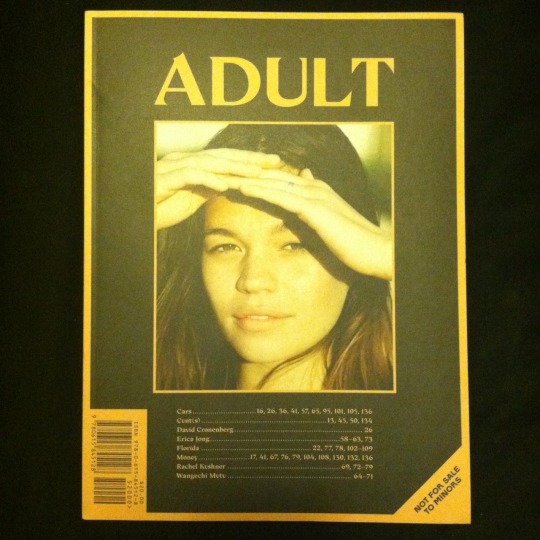
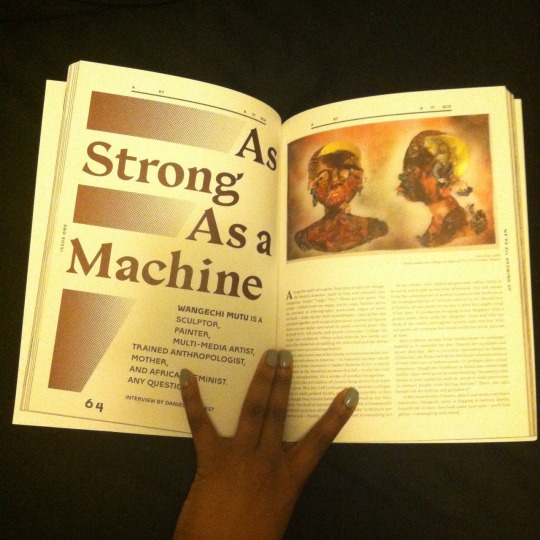
Wangechi Mutu in Adult magazine issue 1. Adult is “what Playboy would have been if women created it…where women are the subject and not the object…”
#feminist#feminism#afrofuturistfeminist#wangechimutu#mutustudio#art#eroticism#erotic#women#print#magazine#afrofuturism#afrofuturist#africa#african#blackart#blackcontemporaryart#college#artist#aisforafrofuturism
17 notes
·
View notes
Photo
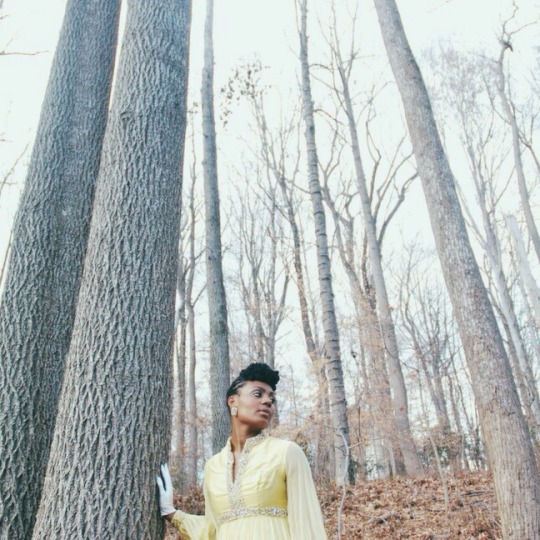
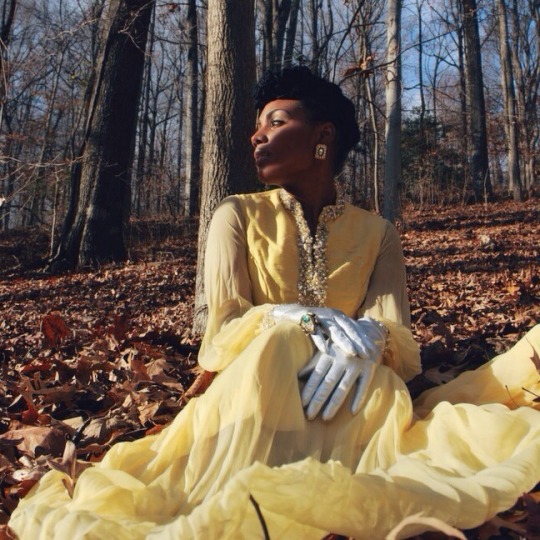
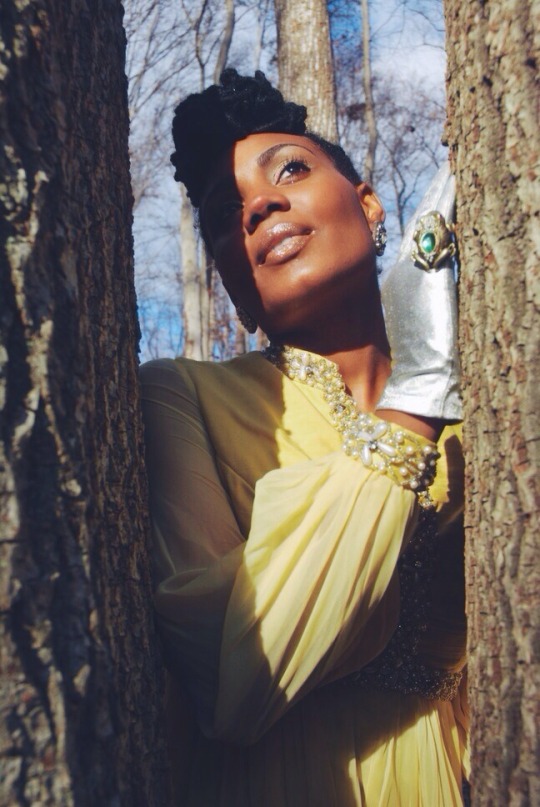
That time I explored the forest, in freezing temperatures, in a pretty yellow vintage dress, as an AfroFuturist Goddess.
"Afrofuturist Goddess," ©2010. Original Photography: Elen Awalom Stylist: Tanekeya Word
#AfroFuturism#afrofuturist#afrofuturistic#afrofuturistvisualartist#afrofuturistfeminist#aisforafrofuturism#hybridchic#tanekeyaword#photography#elenawalom#art#fashion#tree#yellow#naturalhair#locs
38 notes
·
View notes
Photo
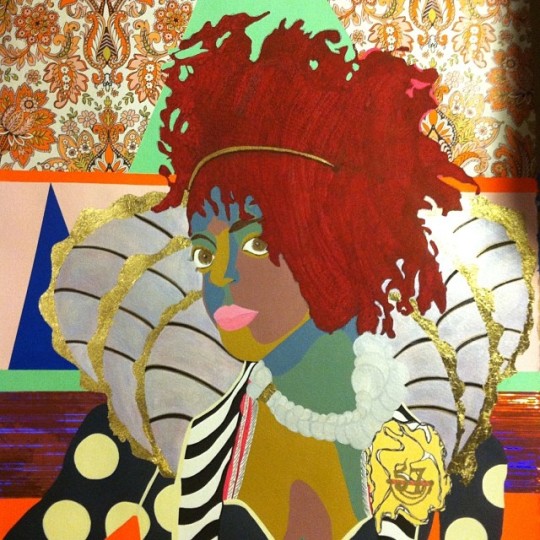
my last commission of the year “Queen Me” ©2013 a la The Adventures of Alice + Wonderland gone Afrofuturistic.
#AfroFuturism#afrofuturistic#afrofuturist#afrofuturistfeminist#aisforafrofuturism#aliceinwonderland#naturalhair#queen#victorian#tanekeyaword#hybridchic#painting#art#artistsontumblr#contempoarayart#popart#mixedmedia#blackcontemporaryart#portraiture#collage#mixedmediaart
17 notes
·
View notes
Photo
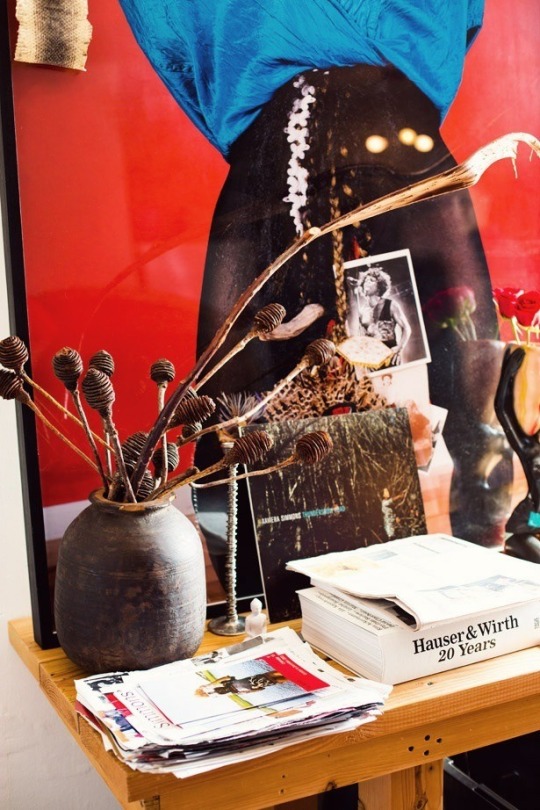
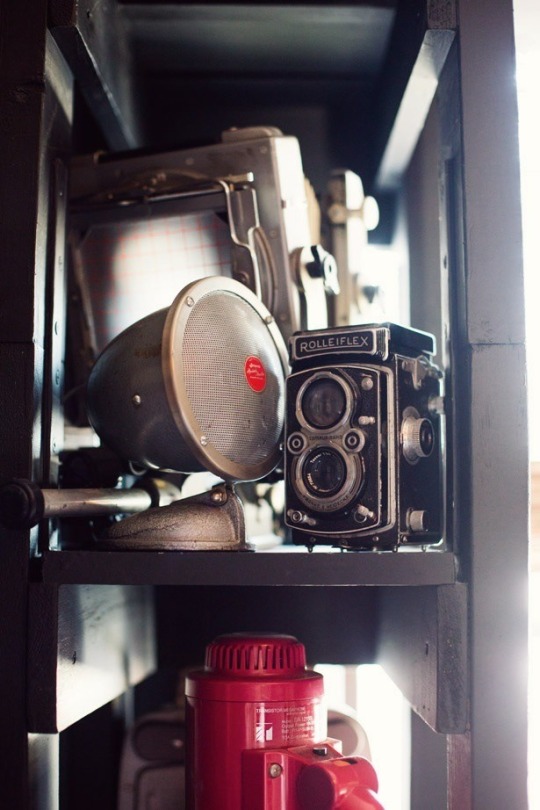
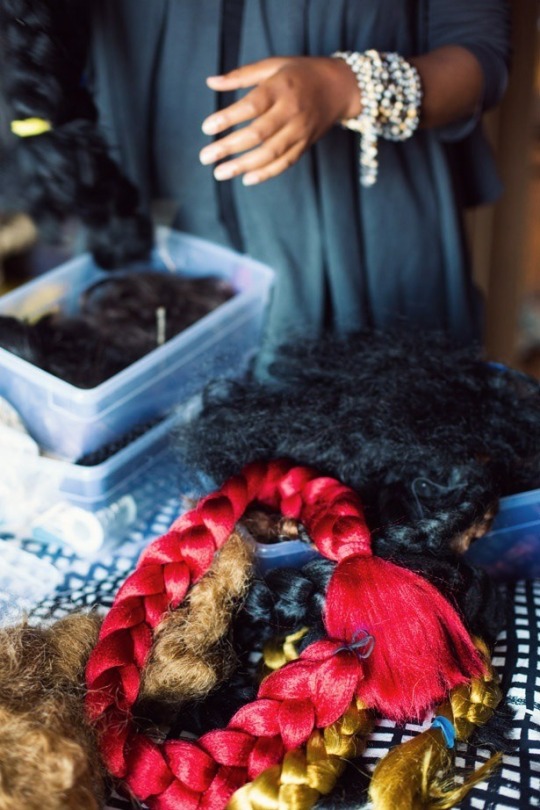
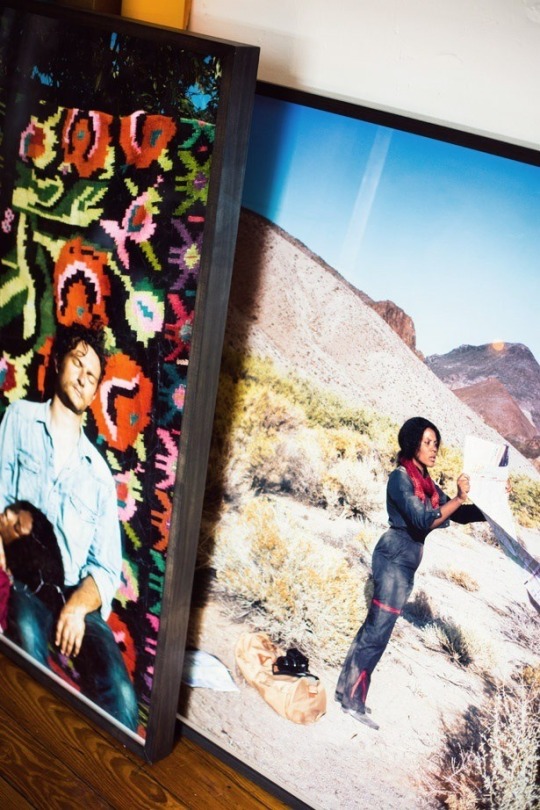
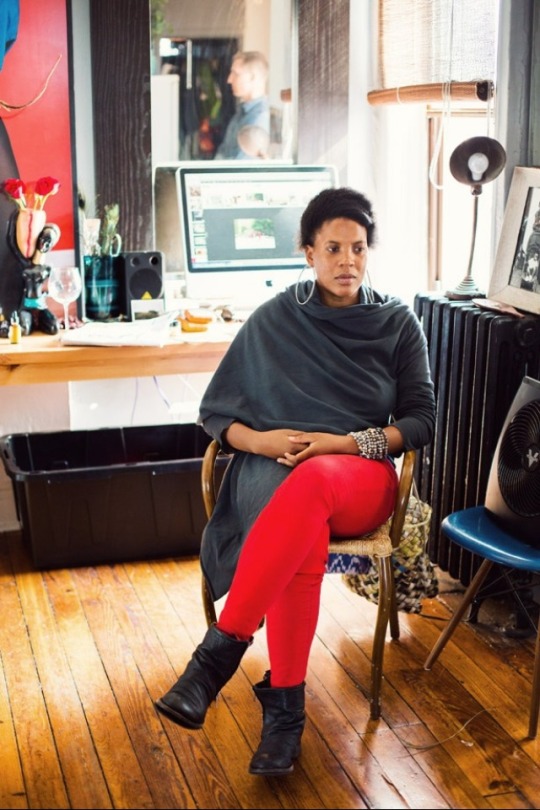
On how to be a successful artist:
I’m a pretty optimistic person. I feel like I’ve worked my ass off for every single moment, and I’ve also been met. I feel like perseverance will top everything. I think if people can really focus on that, on persevering and communicating and keeping themselves going, that you’re going to be met. -Xaviera Simmons
read more via: annstreetstudio
#annstreetstudio#xaviera simmons#afrofuturism#art#afrofuturistic#photography#blackcontemporaryart#contemporaryart#aisforafrofuturism
69 notes
·
View notes